<< Our Photo Pages >> Sacsayhuaman - Hillfort in Peru
Submitted by bat400 on Saturday, 11 December 2010 Page Views: 19983
Iron Age and Later PrehistorySite Name: Sacsayhuaman Alternative Name: Saksaq WamanCountry: Peru Type: Hillfort
Nearest Town: Cusco, Peru
Latitude: 13.5091S Longitude: 71.9822W
Condition:
| 5 | Perfect |
| 4 | Almost Perfect |
| 3 | Reasonable but with some damage |
| 2 | Ruined but still recognisable as an ancient site |
| 1 | Pretty much destroyed, possibly visible as crop marks |
| 0 | No data. |
| -1 | Completely destroyed |
| 5 | Superb |
| 4 | Good |
| 3 | Ordinary |
| 2 | Not Good |
| 1 | Awful |
| 0 | No data. |
| 5 | Can be driven to, probably with disabled access |
| 4 | Short walk on a footpath |
| 3 | Requiring a bit more of a walk |
| 2 | A long walk |
| 1 | In the middle of nowhere, a nightmare to find |
| 0 | No data. |
| 5 | co-ordinates taken by GPS or official recorded co-ordinates |
| 4 | co-ordinates scaled from a detailed map |
| 3 | co-ordinates scaled from a bad map |
| 2 | co-ordinates of the nearest village |
| 1 | co-ordinates of the nearest town |
| 0 | no data |
Internal Links:
External Links:
I have visited· I would like to visit
bat400 visited on 17th Sep 2018 - their rating: Cond: 3 Amb: 4 Access: 3
MartinJEley visited on 15th Apr 2016 - their rating: Cond: 3 Amb: 4 Access: 5 An impressive site where the sheer size of some of the stones used in its construction are incredible. The site is also the head of the Puma design incorporated in the street plan of Cusco.
mfrincu visited on 7th Apr 2015 - their rating: Cond: 5 Amb: 5 Access: 5
PeterR87 visited on 20th Sep 2008 - their rating: Cond: 5 Amb: 5 Access: 5
ModernExplorers visited on 1st Sep 2003 - their rating: Cond: 4 Amb: 5 Access: 3 A fabulous site due to the puzzle-piece type rocks and the way they fit together
SolarMegalith visited on 1st Jul 2003 - their rating: Cond: 4 Amb: 4 Access: 5
Dutch visited on 3rd Mar 1997 - their rating: Cond: 2 Very intriguing site, hard to imagine what it looked like before the Spanish started to use it as a quarry. Friendly locals around, giving information about it's history.
Also some lippy kids standing gang like on the way up from Cusco, with a warning from an elderly lady to take heed for them.
Tdiver visited on 1st Jan 1991 - their rating: Cond: 2 Amb: 5 Access: 5
PAB DrewParsons davidmorgan have visited here
Average ratings for this site from all visit loggers: Condition: 3.5 Ambience: 4.57 Access: 4.43
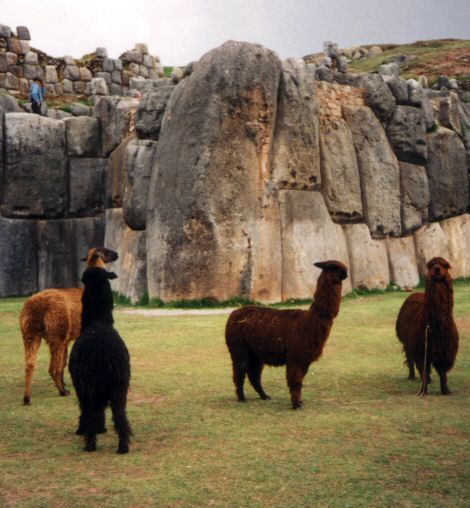
The three zig-zagging megalithic walls bounding Sacsayhuaman on two sides and many of the other structures within the side are estimated to have been built around 1100, but were added to by the Incan Empire in the 15th Century. Most of the smaller buildings and the top runs of stone on the walls were torn down to create the historic Spanish colonial city below. Foundations still exist of three towers, one of which was the last strong hold of Manco Inca, a puppet ruler who turned and led a rebellion against the Spanish in 1536, four years after the initial defeat and capture of Atahualpa Inca.
A Unesco World Heritage Site, Sacsayhuaman can be driven to in about 10 minutes from the old Cusco city center, or can be reached on foot in about 30 minutes if you have not been debilitated by the 3320 meter elevation. It is also on many guided tours of Cusco.
It is the final site of a winter solsice festival of the sun, Inti Raymi, actually held on June 24th (St. John the Baptist.) Celebrants, including those participating in a massive, historic pagent, march from the Coricancha (the Corral of Gold, or the Temple of the Sun) in Cusco to Sacsayhuaman. Music, dance, and oration by actors portraying the Inca court are all part of the ceremony, which is intended to duplicate aspects of the original Incan ceremony.
Note: Torrential Rains Damage Inca Wall. See comment.
You may be viewing yesterday's version of this page. To see the most up to date information please register for a free account.

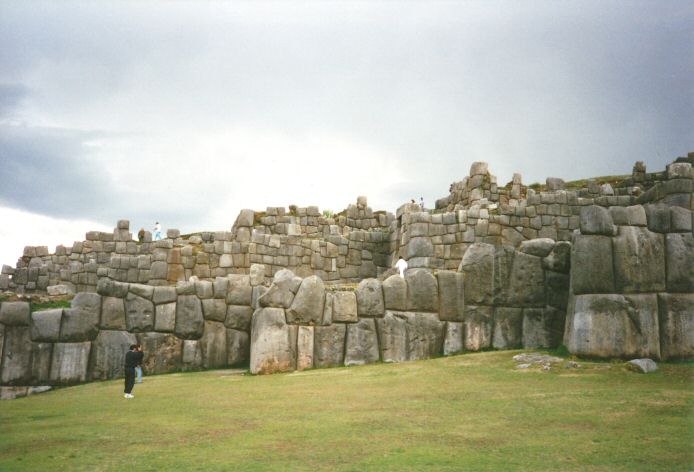
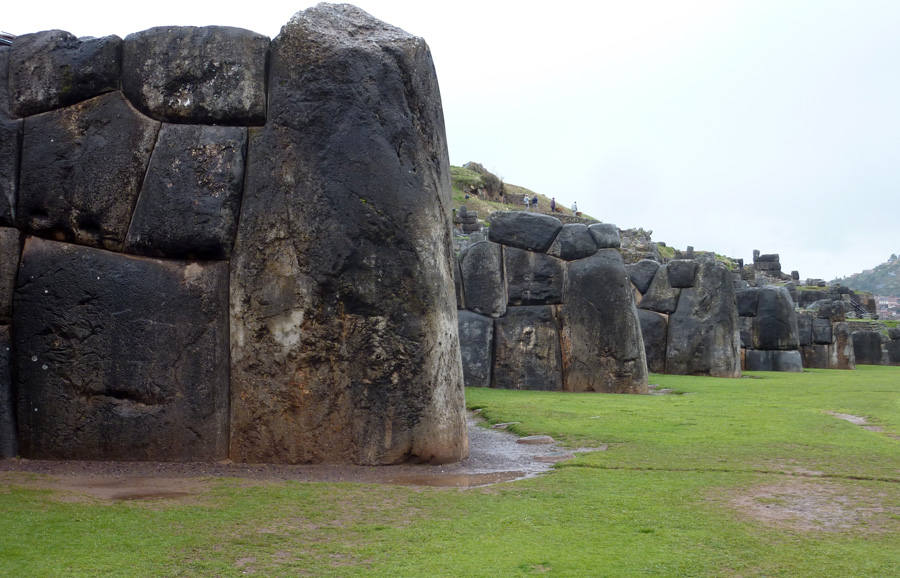









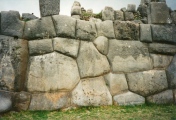




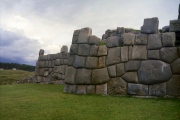
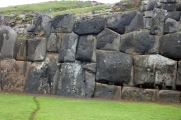
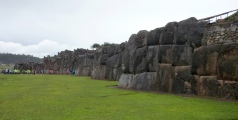




These are just the first 25 photos of Sacsayhuaman. If you log in with a free user account you will be able to see our entire collection.
Do not use the above information on other web sites or publications without permission of the contributor.
Click here to see more info for this site
Nearby sites
Click here to view sites on an interactive map of the areaKey: Red: member's photo, Blue: 3rd party photo, Yellow: other image, Green: no photo - please go there and take one, Grey: site destroyed
Download sites to:
KML (Google Earth)
GPX (GPS waypoints)
CSV (Garmin/Navman)
CSV (Excel)
To unlock full downloads you need to sign up as a Contributory Member. Otherwise downloads are limited to 50 sites.
Turn off the page maps and other distractions
Nearby sites listing. In the following links * = Image available
829m SE 142° Museo de Arte Precolombino* Museum
944m SSE 159° Cusco* Ancient Village or Settlement
1.0km SSE 147° The Cusco Machu Picchu Museum* Museum
1.3km E 90° Qenko* Ancient Temple
1.4km SSE 151° Cusco - Qorikancha* Ancient Temple
1.6km NE 34° Lanlakuyok Carving
1.8km E 87° Kusilluchayoc Carving
1.8km S 184° Qhataqasapatallaqta Barrow Cemetery
2.0km ENE 79° Lacco Carving
3.3km ENE 78° Inkil Tambo* Ancient Temple
3.6km NE 37° Puca Pucara* Stone Fort or Dun
3.7km NNE 26° Tambomachay* Ancient Village or Settlement
15.0km NNW 333° Puma Temple* Ancient Temple
15.0km NNW 333° Chinchero* Ancient Village or Settlement
16.4km NNE 14° Huchuy Qosqo Ancient Village or Settlement
18.3km NE 55° Pisac Ruins* Ancient Village or Settlement
21.8km S 176° Maucallacta Ancient Village or Settlement
22.5km ESE 108° Tipon* Ancient Village or Settlement
29.0km ESE 112° Chokepukio Ancient Village or Settlement
29.8km NW 321° Las Salinas* Ancient Mine, Quarry or other Industry
30.5km NW 311° Moray Terraces* Misc. Earthwork
30.9km ESE 112° Pikillaqta Ancient Village or Settlement
32.2km ESE 113° Rumiqullqa Ancient Mine, Quarry or other Industry
36.3km NW 312° Ñaupa Iglesia* Ancient Temple
37.6km NW 306° Raqaypata* Ancient Village or Settlement
View more nearby sites and additional images

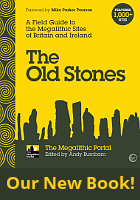

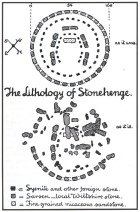


 We would like to know more about this location. Please feel free to add a brief description and any relevant information in your own language.
We would like to know more about this location. Please feel free to add a brief description and any relevant information in your own language. Wir möchten mehr über diese Stätte erfahren. Bitte zögern Sie nicht, eine kurze Beschreibung und relevante Informationen in Deutsch hinzuzufügen.
Wir möchten mehr über diese Stätte erfahren. Bitte zögern Sie nicht, eine kurze Beschreibung und relevante Informationen in Deutsch hinzuzufügen. Nous aimerions en savoir encore un peu sur les lieux. S'il vous plaît n'hesitez pas à ajouter une courte description et tous les renseignements pertinents dans votre propre langue.
Nous aimerions en savoir encore un peu sur les lieux. S'il vous plaît n'hesitez pas à ajouter une courte description et tous les renseignements pertinents dans votre propre langue. Quisieramos informarnos un poco más de las lugares. No dude en añadir una breve descripción y otros datos relevantes en su propio idioma.
Quisieramos informarnos un poco más de las lugares. No dude en añadir una breve descripción y otros datos relevantes en su propio idioma.